6 Best Grass Types for Alabama
BY MICHELLE SELZER | APRIL 29TH, 2023 | ALABAMA, LAWN CAREWhen they’re not in front of the TV shouting “Roll Tide”, many Alabamians enjoy spending time outside, including in their own backyards. Whether you’re sipping sweet tea by the pool or playing football, a healthy lawn will improve your outdoor experience. And choosing one of the best grass types for Alabama makes it much easier to maintain a pristine lawn.
In this article:
- Best Grass Types for North Alabama
- Best Grass Types for Central Alabama
- Best Grass Types for South Alabama
- FAQ About Birmingham Grass Types
- Choosing Plant and Grass Varieties for Your Alabama Landscape
Warm-Season vs. Cool-Season Grasses
Before choosing a grass type, consider your grass zone. For example, North Alabama is in the transitional zone, and the rest of the state is in the warm-season grass zone. Thus both warm- and cool-season grasses do well in northern Alabama, but central and southern Alabama favor warm-season grass.
Warm-season grass prefers hot weather, so its growth peaks in spring and summer, and it typically goes dormant in the winter. In contrast, cool-season grass prefers moderate temperatures, so its growth peaks in the spring and fall, and many cool-season grasses go dormant in both winter and summer.
4 Warm-Season Grasses for Alabama
Alabama’s long, hot summers make it best suited for warm-season grass. Homeowners in North and Central Alabama should consider cold-tolerant varieties that withstand winter cold fronts.
1. Bermudagrass
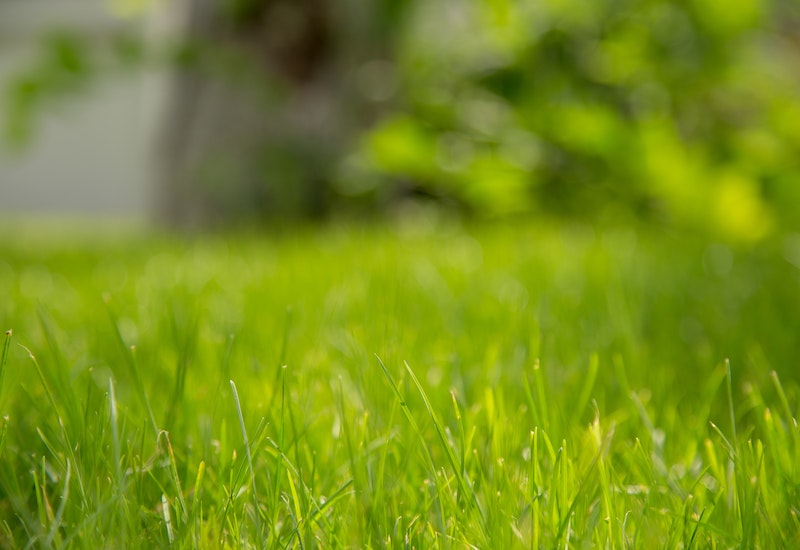
Photo Credit: Pexels
Due to its beauty and resilience, bermudagrass is Alabama’s most popular turf grass. It quickly grows into a dense dark green lawn that is highly tolerant to foot traffic, resistant to weeds, and forgiving when exposed to salt. So if you live on the Gulf Coast or play sports on the lawn, bermudagrass is an excellent choice.
The main disadvantage of bermudagrass is all the work it takes to maintain it. Because it’s fast growing, you must mow it a lot, and it also requires frequent fertilization and dethatching. Also, if you live in North or Central Alabama, consider cold-tolerant bermuda cultivars, such as Yukon bermudagrass, to ensure it survives a harsh winter.
Classification: Warm-season grass
Spreads by: Stolons and rhizomes
Shade tolerance: Low; thrives in full sun
Drought tolerance: High
Foot traffic tolerance: High
Maintenance needs: Needs frequent mowing due to fast growth rate; develops thatch easily; needs regular fertilization
Mowing height: Set the mowing height between 0.5 and 1.5 inches for hybrid bermudagrass cultivars. Mow common bermudagrass down to 1.5 to 2.5 inches.
Potential for disease: Good resistance to disease, although diseases are common; low resistance to insects
Soil pH: 6-6.5
Soil type: Tolerates most soil types
Other notes: Bermudagrass requires more fertilization than most Alabama turf. Therefore, conduct a soil test every year or two to ensure you provide enough nitrogen and lime for the lawn. Avoid burning the grass by using a fertilizer that contains no more than one pound of nitrogen per 1,000 square feet.
2. Zoysiagrass
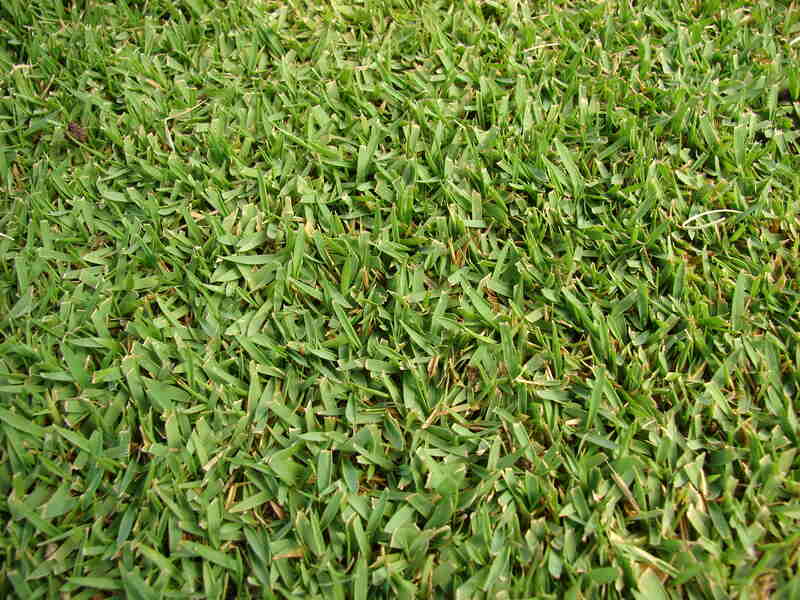
Photo Credit: Forest & Kim Starr / Wikimedia Commons / CC BY 3.0
Zoysiagrass grows densely in the heat, but can tolerate colder temperatures than most warm-season grasses. It is also salt-tolerant and able to adapt to just about any well-drained soil. Thus, zoysia is a great option for lawns throughout the state. Additionally, it has much better shade tolerance than bermudagrass and requires less maintenance.
Alabama’s most popular zoysia variety is zoysia japonica. Its coarse light green blades are drought tolerant and resistant to weeds. Many homeowners in northern Alabama choose Meyer zoysiagrass, a zoysia japonica cultivar with high cold tolerance. However, if you have many trees, consider emerald zoysia because it is better at tolerating shade.
Classification: Warm-season grass
Spreads by: Stolons and rhizomes
Shade tolerance: Moderate
Drought tolerance: Moderate
Foot traffic tolerance: High, but recovers slowly from damage
Maintenance needs: Low nitrogen fertilization requirements, although, it’s prone to thatch build-up.
Mowing height: Set mowing height between 1 and 2 inches.
Potential for disease: Good disease tolerance overall, but may get dollar spot or brown patch fungus
Soil pH: 6-6.5
Soil type: Well-draining, some cultivars more tolerant of a wide range of soils than others
Other notes: Zoysia has good tolerance to herbicides and pesticides.
3. Bahiagrass
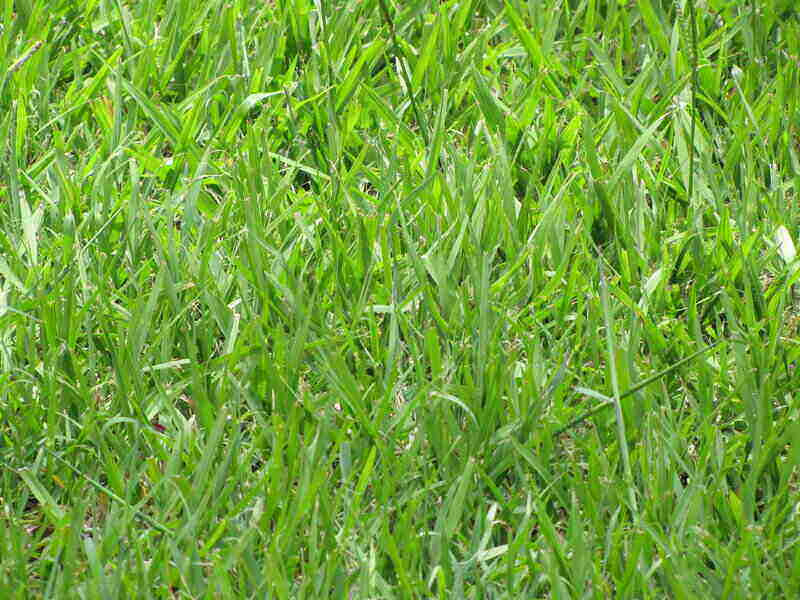
Photo Credit: Forest and Kim Starr / Flickr / CC BY 2.0
If you are looking for low-maintenance turf, bahiagrass is drought-tolerant and rarely needs fertilizer. Due to its deep root system, bahia pulls more moisture and nutrients from the soil than most grass types. Additionally, it resists most insects and seldom succumbs to disease.
Although bahia is low-maintenance, it can be challenging to mow. In the warm months, bahiagrass grows long seed stems that are difficult to cut. However, frequently sharpening your lawn mower blades will make mowing easier.
Classification: Warm-season grass
Spreads by: Stolons
Shade tolerance: Low, but more shade-tolerant than bermudagrass.
Drought tolerance: Moderate
Foot traffic tolerance: Low
Maintenance needs: Low fertility requirements. Expect frequent mowing.
Mowing height: Ideal grass height is 3 to 4 inches.
Potential for disease: Good resistance to disease and insect infestations
Soil pH: 5.5 to 6.5
Soil type: Performs well in sandy loam soils, but tolerates a wide range of soils, including soils with low fertility.
Other notes: You can plant bahiagrass from seeds or sod, but the lawn will establish much quicker with sod.
4. Centipedegrass
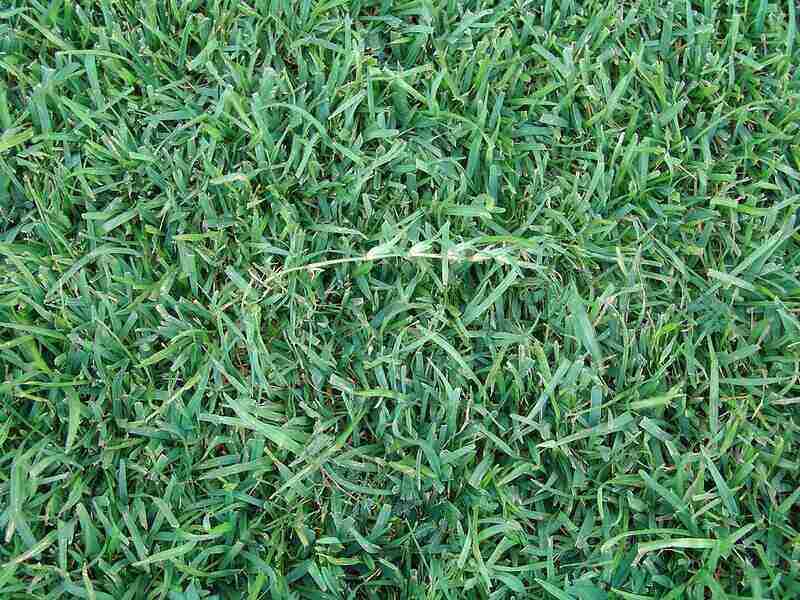
Photo Credit: James Becwar / Wikimedia Commons / CC0
Many Alabamians like centipedegrass because it looks similar to St. Augustinegrass but is more cold-tolerant. However, it isn’t as cold-tolerant as the other lawn grasses on our list, so it’s best kept in South and Central Alabama. Consider TifBlair, because it can withstand colder weather than typical centipedegrass.
Additional advantages of centipedegrass include its adaptability to various soil types and its tolerance to shade. However, centipede grows slowly and can’t handle much foot traffic.
Classification: Warm-season grass
Spreads by: Stolons
Shade tolerance: Moderate
Drought tolerance: Low
Foot traffic tolerance: Low
Maintenance needs: Low fertilizer requirements. Requires weekly mowing.
Mowing height: Set mowing height between 1 and 2 inches.
Potential for disease: Common diseases include brown patch, leaf spot, and Pythium root rot.
Soil pH: 5-6
Soil type: Thrives in wet, poorly drained sandy soils with low fertility
Other notes: Regularly mow your lawn to its recommended height and avoid over-fertilizing to prevent winter illness. Also, be careful of herbicides and pesticides that may weaken the grass.
2 Cool-Season Grasses for Alabama
North Alabama is in the transitional grass zone. It has cooler temperatures than the rest of the state, so heat-tolerant cool-season grass grows well in Florence, Huntsville, and the surrounding area.
1. Tall Fescue
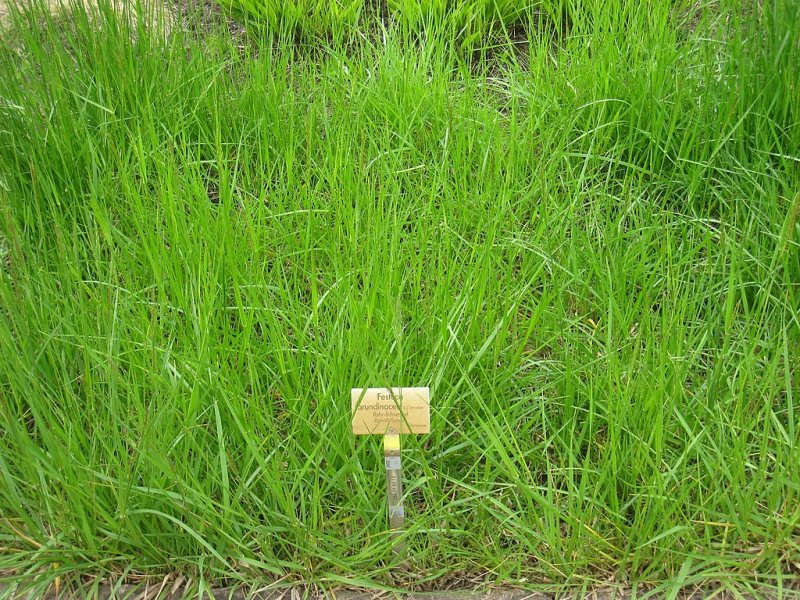
Photo Credit: Daderot / Wikimedia Commons / Public domain
Many homeowners in northern Alabama choose tall fescue because it’s highly adaptable. For example, it needs less sun than most grass types, so it keeps its dark green color, even in partially shaded areas. Additionally, tall fescue handles moderate foot traffic, tolerates drought, and resists most diseases.
Although it is one of the most heat-tolerant cool-season grass species, tall fescue doesn’t like extreme heat, so it is best left in North Alabama. Consider heat tolerance cultivars, such as Firenza II or Bonfire.
Classification: Cool-season grass
Spreads by: Produces short rhizomes but has a bunch-type growth habit
Shade tolerance: Moderate
Drought tolerance: Moderate to High
Foot traffic tolerance: Moderate
Maintenance needs: Frequent mowing. Does not produce significant thatch.
Mowing height: Set mowing height to 2 inches when grass reaches 3 inches tall.
Potential for disease: Tolerant of most diseases when properly maintained.
Soil pH: 5.5-6.5
Soil type: Adapted to a wide range of soil conditions, but prefers fertile clay soils with good drainage.
Other notes: To compensate for summer thinning, overseed fescue grass in the fall. It may periodically need additional grass seed.
2. Southern Blue
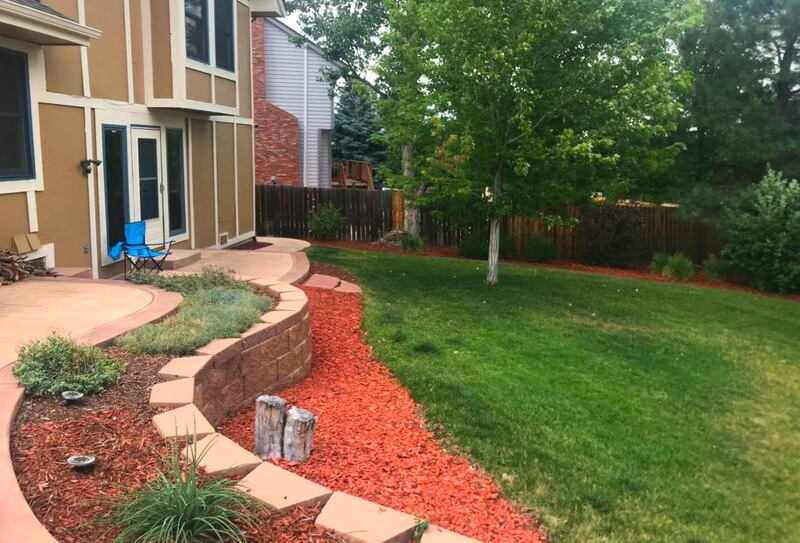
Photo Credit: Brenda Ryan / Wikilawn
Kentucky bluegrass is America’s most popular turfgrass, but it doesn’t like Alabama’s steaming summers. So Alabamians who want the look of Kentucky bluegrass choose Southern Blue. It’s a mixture of Kentucky bluegrass and Texas bluegrass developed by Texas A&M. Southern Blue handles heat and shade better than tall fescue, making it one of the best cool-season grasses for southern lawns.
Classification: Cool-season grass
Spreads by: Rhizomes
Shade tolerance: High
Drought tolerance: Moderate
Foot traffic tolerance: Moderate
Maintenance needs: Moderate mowing and fertilization requirements.
Mowing height: Set mowing height to 2 to 3 inches
Potential for disease: It is especially susceptible to diseases in the summer.
Soil pH: 5.5 to 6.5
Soil type: Prefers well-drained, fertile soil
Other notes: Let it grow 3 to 4 inches in the summer before mowing. Don’t fertilize during the summer; the best months to fertilize are September and February.
Best Grass Types for North Alabama
The best grass types for North Alabama include:
- Bermudagrass
- Zoysiagrass
- Tall fescue
- Southern Blue
Best Grass Types for Central Alabama
The best grass types for Central Alabama include:
- Bermudagrass
- Zoysiagrass
- Bahiagrass
- Centipedegrass
Best Grass Types for South Alabama
The best grass types for South Alabama include:
- Bermudagrass
- Zoysiagrass
FAQ About Birmingham Grass Types
Warm-season grass does the best in Mobile and the surrounding area. Bermudagrass and zoysiagrass are two of the best warm-season grasses for Alabama, and they are both salt-tolerant, which is important if you live by the sea.
The best grass types for Huntsville are the following:
● Bermudagrass
● Zoysiagrass
● Tall fescue
● Southern Blue
The best grass types for Birmingham are the following warm-season grasses:
● Bermudagrass
● Zoysiagrass
● Bahiagrass
● Centipedegrass
Choosing Plant and Grass Varieties for Your Alabama Landscape
When choosing plants for your yard, please consider the following:
- Sunshine: Some plants love sunshine, and some love shade. If you have a lot of trees, Southern blue, tall fescue, and zoysiagrass are the best options for your Alabama lawn.
- Foot traffic: Select grass that can endure heavy foot traffic, such as bermudagrass, if you use your lawn to play sports or host outdoor barbeques.
- Maintenance: If you don’t like doing yard work, take a look at low-maintenance landscaping ideas for Alabama.
- Native plants: Alabama’s best native plants are easy to care for and great for the environment.
- Hazards: If you have small children or pets, it’s best to avoid poisonous plants and plants with sharp edges.
If you want a lush and beautiful lawn, consider hiring a professional. Experienced lawn care pros in Alabama can take the weight of yard work off your shoulders, so you’ll have extra time to take a trip to Little River Canyon National Preserve or visit the USS Alabama.
Main Image Credit: Chris Pruitt / Wikimedia Commons / CC BY-SA 3.0